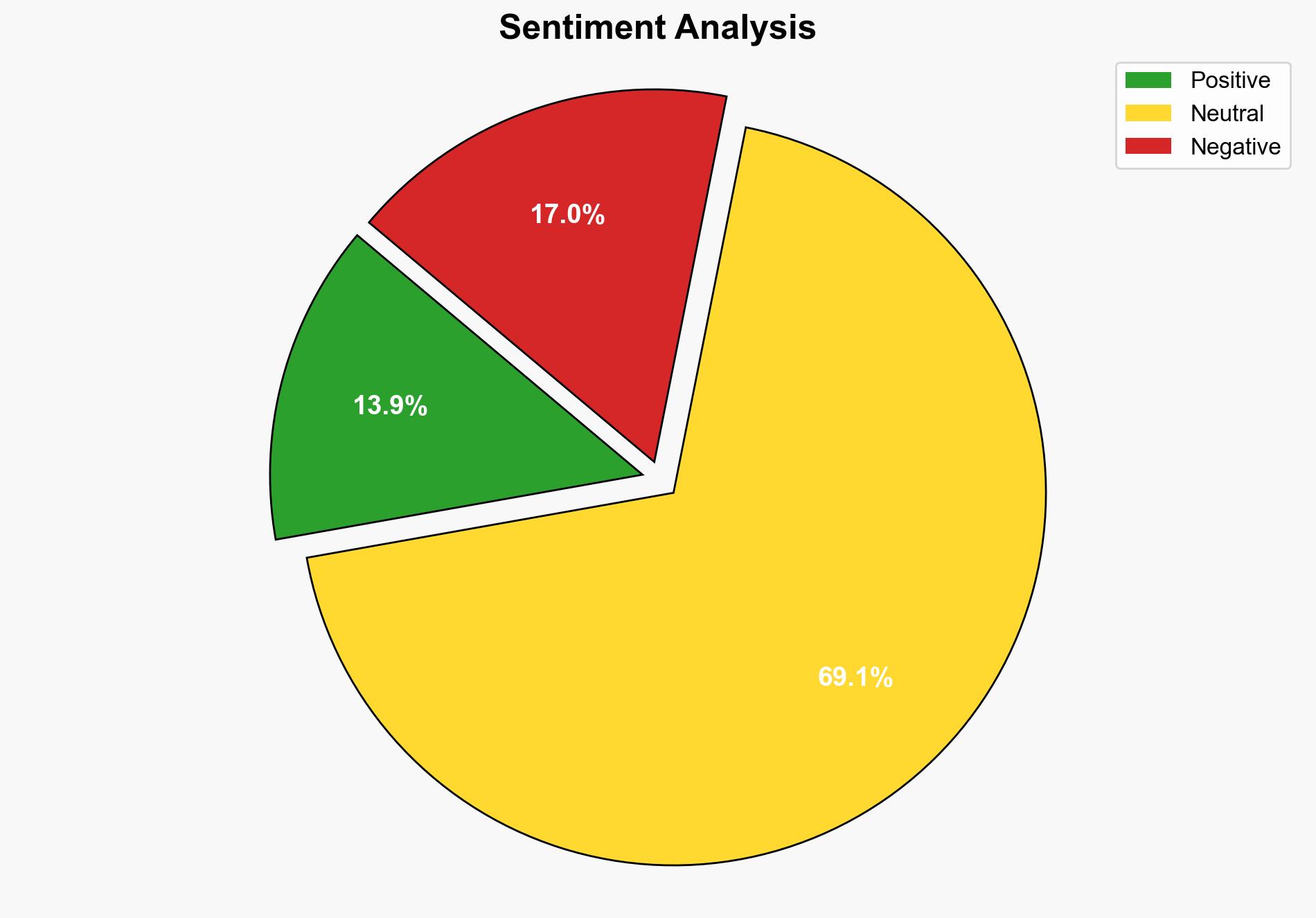Catastrophic hack underscores public defender security gaps – Boston Herald
Published on: 2025-11-02
Intelligence Report: Catastrophic hack underscores public defender security gaps – Boston Herald
1. BLUF (Bottom Line Up Front)
The recent cyberattack on public defender offices in multiple western states highlights significant vulnerabilities in the judicial system’s cybersecurity infrastructure. The most supported hypothesis is that the attack was opportunistic, targeting organizations with valuable data and limited resources for cybersecurity. Confidence level: Moderate. Recommended action includes immediate enhancement of cybersecurity protocols and comprehensive risk assessments across similar institutions.
2. Competing Hypotheses
1. **Opportunistic Cybercrime Hypothesis**: The attack was carried out by cybercriminals seeking financial gain by targeting organizations with valuable data and limited cybersecurity defenses. This is supported by the ransom demand and the indiscriminate nature of the attack.
2. **Coordinated Disruption Hypothesis**: The attack was part of a coordinated effort to disrupt the judicial system, possibly by a state-sponsored actor or activist group. This hypothesis considers the simultaneous targeting of multiple states and the strategic impact on the judicial process.
Using Analysis of Competing Hypotheses (ACH), the Opportunistic Cybercrime Hypothesis is better supported due to the lack of evidence indicating a coordinated effort and the presence of ransom demands typical of financially motivated attacks.
3. Key Assumptions and Red Flags
– **Assumptions**: The Opportunistic Cybercrime Hypothesis assumes that the attackers are primarily motivated by financial gain rather than political or ideological objectives.
– **Red Flags**: The absence of publicly available data from the attack could indicate either a successful ransom payment or a strategic choice by the attackers to withhold data for future leverage.
– **Blind Spots**: Limited information on the attackers’ identity and motives creates uncertainty in attributing the attack to a specific group or state actor.
4. Implications and Strategic Risks
The attack exposes systemic vulnerabilities in public defender offices, potentially leading to delays in legal proceedings and undermining public trust in the judicial system. There is a risk of cascading effects if similar institutions are targeted, impacting broader legal and governmental functions. Economically, the cost of recovery and increased cybersecurity measures could strain already limited resources.
5. Recommendations and Outlook
- Immediate implementation of enhanced cybersecurity protocols and training for staff in public defender offices.
- Conduct a comprehensive risk assessment to identify and mitigate vulnerabilities across similar institutions.
- Scenario Projections:
- Best Case: Successful implementation of cybersecurity measures prevents future attacks, restoring trust and functionality.
- Worst Case: Continued vulnerabilities lead to further attacks, causing significant disruptions in the judicial system.
- Most Likely: Incremental improvements in cybersecurity reduce the frequency and impact of future attacks.
6. Key Individuals and Entities
– Jimmy Jenkins
– Jamie Tarabay
– Jon DiMaggio
– Jon Sand
– William Sweet
7. Thematic Tags
national security threats, cybersecurity, counter-terrorism, regional focus




